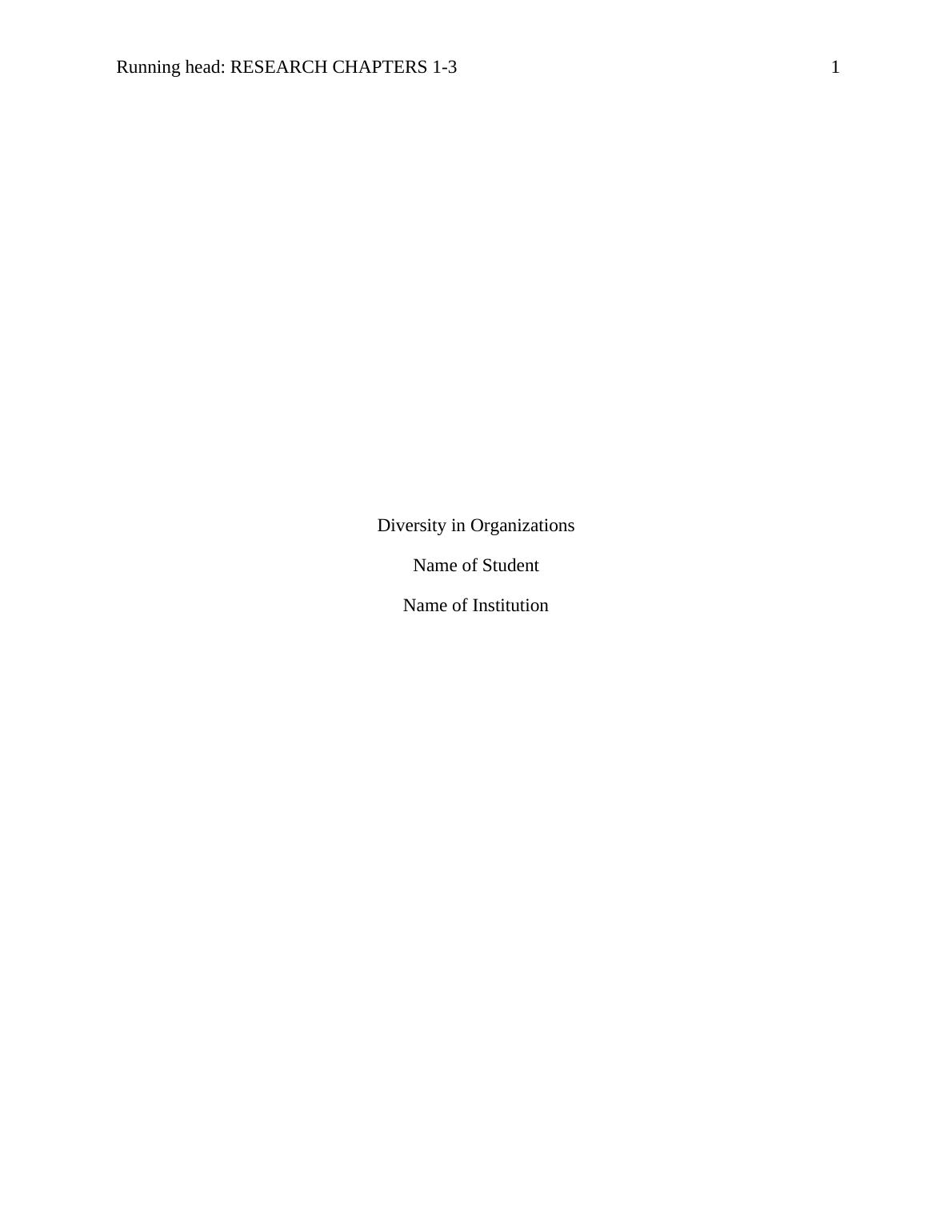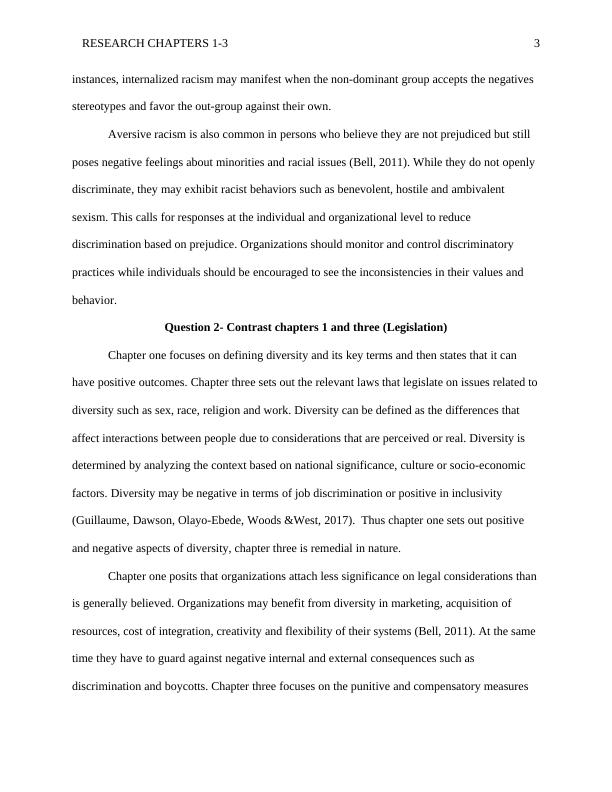Diversity in American Society Assignment
6 Pages1480 Words127 Views
Added on 2019-10-30
Diversity in American Society Assignment
Added on 2019-10-30
ShareRelated Documents
Running head: RESEARCH CHAPTERS 1-3 1Diversity in OrganizationsName of StudentName of Institution

RESEARCH CHAPTERS 1-3 2Diversity in OrganizationsQuestion 1- Philosophical foundations of Chapter 2I do agree with the philosophical foundations as stated out in chapter two. The workplace in the America society exhibits diversity in ethnic, racial and sexual-orientation. The workforce also incorporates people with disabilities and those with weight challenges (obese). The diversity in the demographics may lead to some groups being dominant while others are the minority. This may result in problems of prejudice, stereotyping and discrimination at the workplace. Bell (2011), states that the non-dominant or minority may not necessarily be fewer numerically at the workplace, but may be in terms of power, privilege and prestige. Characteristics of minority groups include: group awareness, identifiable, have experienced discrimination and differential power (Bell, 2011). The group awareness is the consequence of resistance and activism, or the reactionary response due to discrimination and subordination. Identifiability may be physical or cultural traits. Discrimination is practiced in order to limit the socio-economic and political power of the minority group (Bell, 2011). The differential power is exercised by the dominant group to control access to employment, healthcare and education.The categorization and identity attributed to minority groups is based on prejudice. The prejudice arises out of attitudes which are irrational and negative. Discrimination then follows underpinned on prejudice. Stereotyping which over generalizes the characteristics of groups of people also contributes to the categorization and identity of minorities (Bell, 2011). Favoritism atthe workplace is manifest when the dominant group favors those in their group and disenfranchising and being biased against the out-group. Bell (2011), asserts that in other

RESEARCH CHAPTERS 1-3 3instances, internalized racism may manifest when the non-dominant group accepts the negatives stereotypes and favor the out-group against their own.Aversive racism is also common in persons who believe they are not prejudiced but still poses negative feelings about minorities and racial issues (Bell, 2011). While they do not openly discriminate, they may exhibit racist behaviors such as benevolent, hostile and ambivalent sexism. This calls for responses at the individual and organizational level to reduce discrimination based on prejudice. Organizations should monitor and control discriminatory practices while individuals should be encouraged to see the inconsistencies in their values and behavior. Question 2- Contrast chapters 1 and three (Legislation)Chapter one focuses on defining diversity and its key terms and then states that it can have positive outcomes. Chapter three sets out the relevant laws that legislate on issues related todiversity such as sex, race, religion and work. Diversity can be defined as the differences that affect interactions between people due to considerations that are perceived or real. Diversity is determined by analyzing the context based on national significance, culture or socio-economic factors. Diversity may be negative in terms of job discrimination or positive in inclusivity (Guillaume, Dawson, Olayo-Ebede, Woods &West, 2017). Thus chapter one sets out positive and negative aspects of diversity, chapter three is remedial in nature. Chapter one posits that organizations attach less significance on legal considerations than is generally believed. Organizations may benefit from diversity in marketing, acquisition of resources, cost of integration, creativity and flexibility of their systems (Bell, 2011). At the same time they have to guard against negative internal and external consequences such as discrimination and boycotts. Chapter three focuses on the punitive and compensatory measures

End of preview
Want to access all the pages? Upload your documents or become a member.
Related Documents
Diversity and Identity in Identity Formation and Acknowledgementlg...
|4
|844
|452
